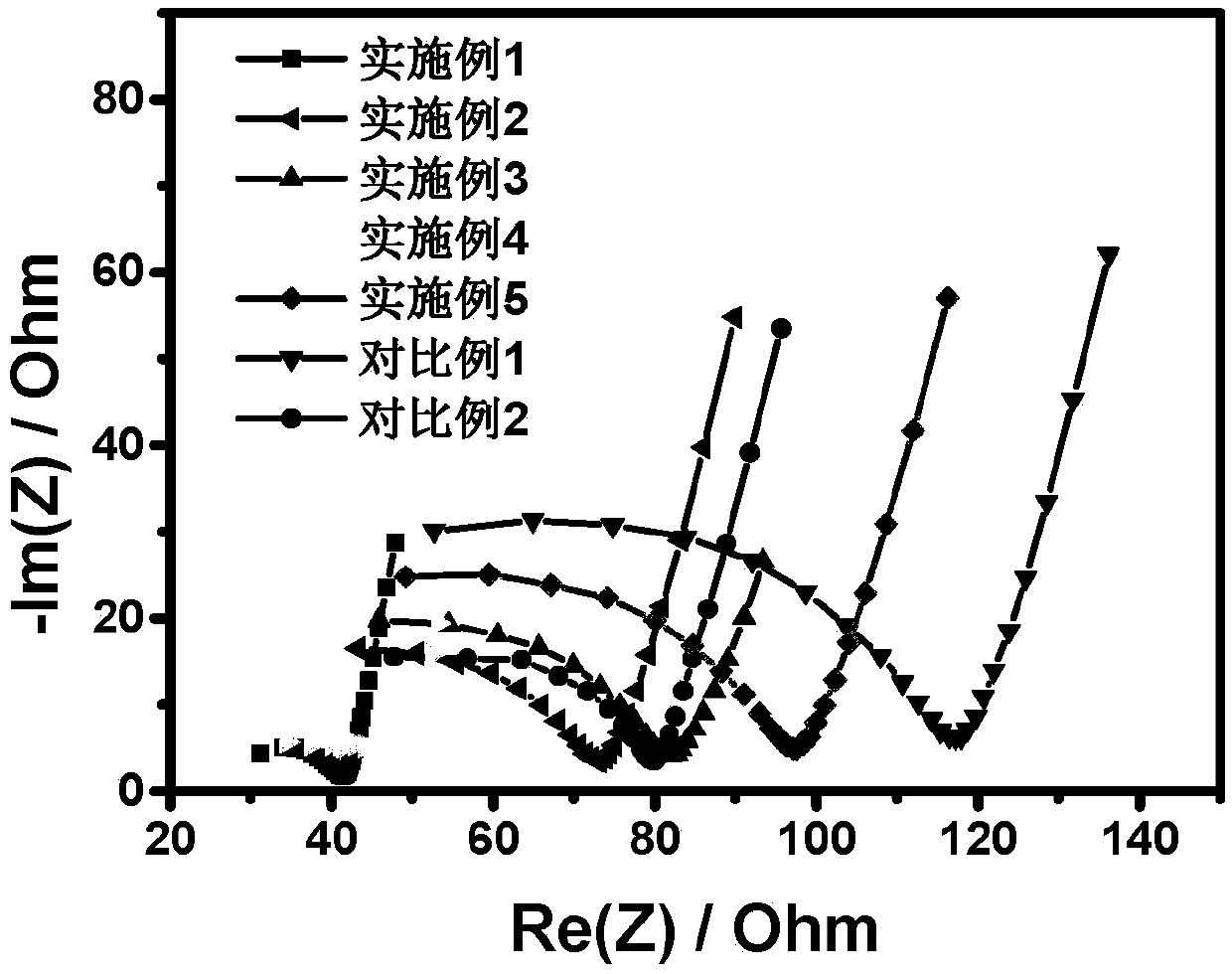Organic-inorganic-ionic liquid composite solid electrolyte, preparation method and application thereof
A solid electrolyte, ionic liquid technology, applied in solid electrolytes, hybrid capacitor electrolytes, non-aqueous electrolytes, etc., can solve the problems of low ionic conductivity of polymer electrolytes, poor mechanical properties of polymer electrolyte membranes, and uneven dispersion of inorganic particles. , to achieve the effect of improving electrochemical performance, conducive to transmission, and good mechanical properties
- Summary
- Abstract
- Description
- Claims
- Application Information
AI Technical Summary
Problems solved by technology
Method used
Image
Examples
preparation example Construction
[0038] One aspect of the embodiments of the present invention provides a method for preparing an organic-inorganic-ionic liquid composite solid electrolyte, which includes:
[0039] Provide a uniform mixed reaction system comprising polymer monomers, inorganic nanoparticles, lithium salts, ionic liquids and initiators, wherein the polymer monomers, inorganic nanoparticles and ionic liquids all have reactive vinyl functional groups;
[0040] Lighting or heating the uniformly mixed reaction system allows polymer monomers, inorganic nanoparticles and ionic liquids in the uniformly mixed reaction system to undergo in-situ polymerization to obtain an organic-inorganic-ionic liquid composite solid electrolyte.
[0041] In some preferred embodiments, the preparation method specifically includes:
[0042] (1) uniformly mixing the lithium salt with the ionic liquid to obtain a lithium salt solution;
[0043] (2) uniformly mixing polymer monomers, inorganic nanoparticles and a solvent ...
Embodiment 1
[0078] LiFSI: 0.4g, ionic liquid: 1-vinyl-3-ethylimidazolium hexafluorophosphate: 1.6g, stir while heating at 60°C to obtain lithium salt solution and cool to room temperature, polyethylene glycol diacrylate- 400: 0.5g, Tetramethyltetravinylcyclotetrasiloxane: 0.1g, the two were dissolved in 0.5mL of acetone, stirred evenly and added to the lithium salt solution, and the photoinitiator 2-hydroxyl-2 -Methyl-1-phenyl-1-propanone (HMPP) 5 μL, magnetically stirred evenly, scraped a 300 μm film on a glass plate, and irradiated with a UV lamp for 5 minutes to obtain an electrolyte membrane with a thickness of about 200 μm and an ionic conductivity of 2.5 ×10 -4 S cm -1 , The mechanical strength is 6.1MPa.
Embodiment 2
[0080] LiFSI: 0.4g, ionic liquid: 1-vinyl-3-ethylimidazolium hexafluorophosphate: 2.8g, stir while heating at 60°C to obtain lithium salt solution and cool to room temperature, polyethylene glycol diacrylate- 400: 0.4g, tetramethyltetravinylcyclotetrasiloxane: 0.4g, the two were dissolved in 0.5mL of acetone, stirred evenly and added to the lithium salt solution, and the photoinitiator 2-hydroxyl-2 -Methyl-1-phenyl-1-propanone (HMPP) 4 μL, magnetically stirred evenly, scrape-coated a 300 μm film on a glass plate, and irradiated with a UV lamp for 5 minutes to obtain an electrolyte membrane with a thickness of about 200 μm and an ionic conductivity of 1.4 ×10 -4 S cm -1 , The mechanical strength is 4.9MPa.
PUM
| Property | Measurement | Unit |
|---|---|---|
| melting point | aaaaa | aaaaa |
| mechanical strength | aaaaa | aaaaa |
| mechanical strength | aaaaa | aaaaa |
Abstract
Description
Claims
Application Information
 Login to View More
Login to View More - R&D
- Intellectual Property
- Life Sciences
- Materials
- Tech Scout
- Unparalleled Data Quality
- Higher Quality Content
- 60% Fewer Hallucinations
Browse by: Latest US Patents, China's latest patents, Technical Efficacy Thesaurus, Application Domain, Technology Topic, Popular Technical Reports.
© 2025 PatSnap. All rights reserved.Legal|Privacy policy|Modern Slavery Act Transparency Statement|Sitemap|About US| Contact US: help@patsnap.com



